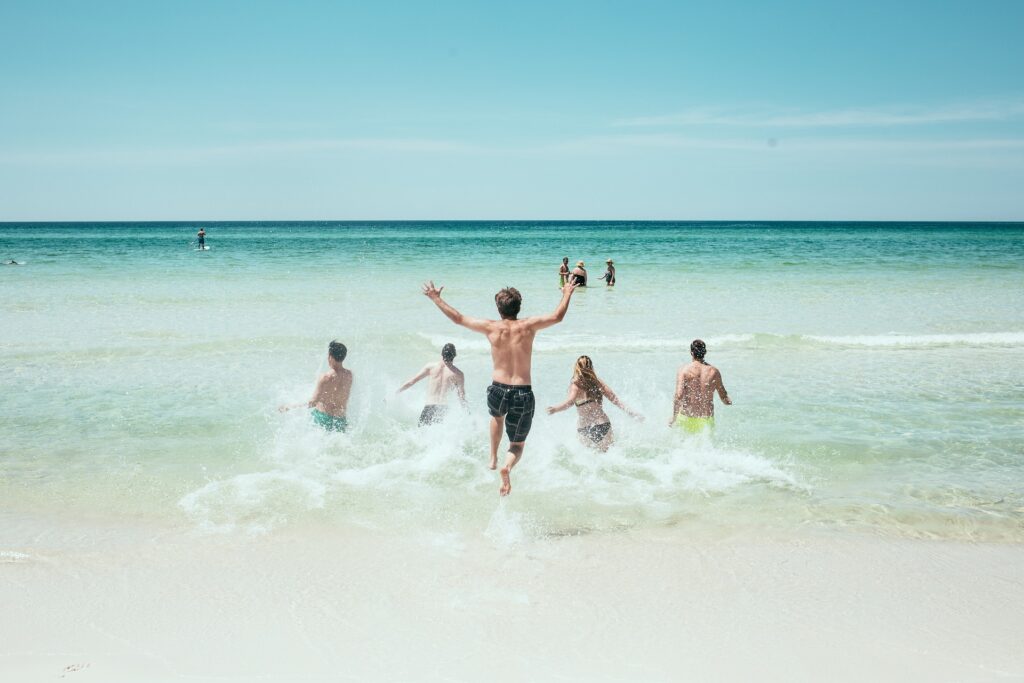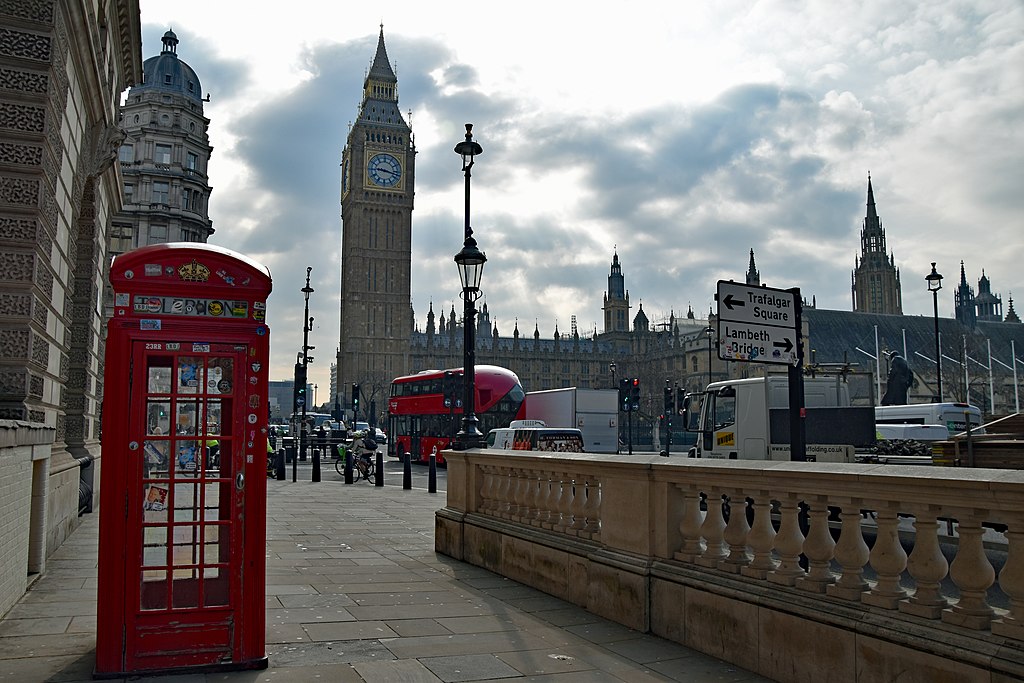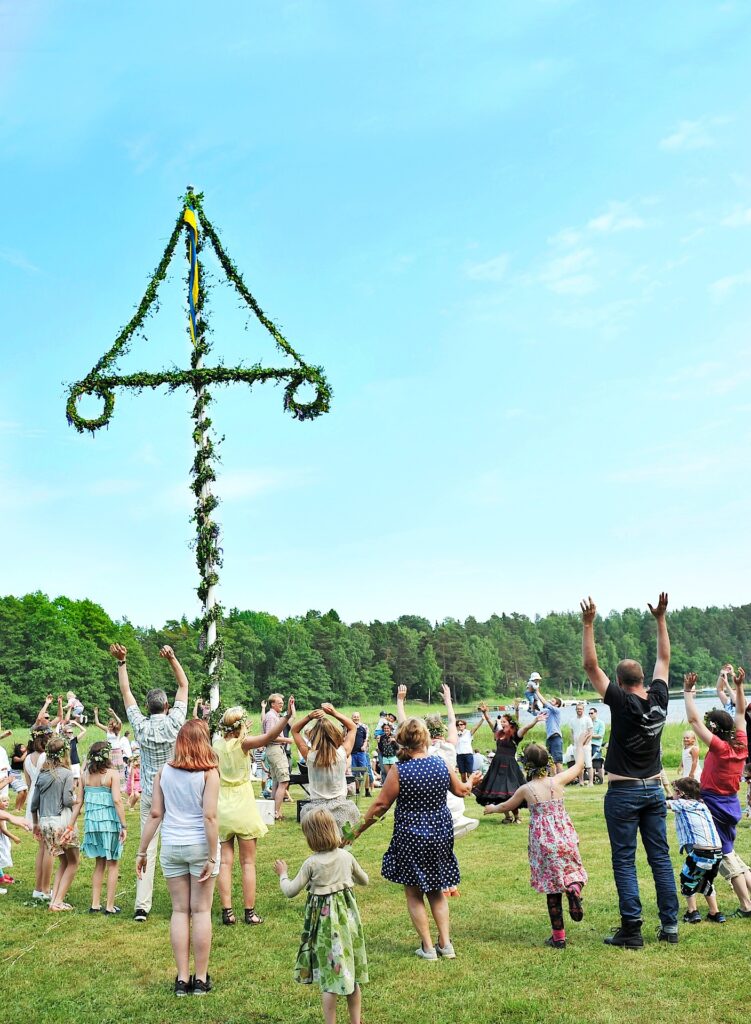Summer vacation
The term summer vacation or summer break refers to the school break between school years and the academic year break, which can last from two weeks to three and a half months depending on the country and district.

Vacations-a bit of history
The escape from the city has ancient roots: as early as the first century BC. Rome was a metropolis with a million inhabitants even then with problems of traffic, noise, etc. so the wealthiest spent long periods of the year in country areas, along the Campanian coast or at the baths.
Again the Romans were the first civilization to engage in leisure travel that could last for years and to create the necessary infrastructure to enable vacations.
With the fall of the Roman Empire and the rise of the Middle Ages, vacationing as we know it came to a halt and travel was undertaken to find new lands to call their own or to raid the lands of enemies.
During the early Renaissance, travel was used primarily for trade and means of transportation were limited with rough roads and brigands lurking. Only the wealthy could afford to travel safely, escorted by soldiers to protect them. Sea travel was also dangerous, with pirates always lurking.
In the early eighteenth century, it became fashionable among wealthy young people in northern Europe, mainly English, to take a “grand tour” for educational purposes in order to broaden culture, and, the most popular destinations were Italy, Greece and Turkey. At the time, means of transportation and transportation routes were not as they are today and the trips lasted at least a few months, so only those with considerable financial means could afford these trips.
The industrial revolution saw the advent of the steam train, which enabled ordinary people to travel to new locations to spend a few days off at the seaside: thus was born the short vacation as we know it today.
Beach tourism spread in the 1800s, and the beach was considered an escape from city life.
The early 1920s saw the rise of entrepreneurs such as Henry Ford who began mass production of affordable automobiles making cars the preferred means of transportation as it was cheap and offered more freedom than trains.
In 1928, the German airship “Graf Zeppelin” carried 20 passengers and 43 crew members in the first commercial flight in history and made the first round-the-world flight the following year
In Italy, the first popular trips were organized in the time of Fascism under the motto “Vacation for All” in which summer colonies and national foundations were also to allow workers and office workers a break from everyday life in order to raise workers’ morale and reward good political conduct. After World War II, this principle was also taken up by other states. Beginning in the 1970s, societal change led to a deep crisis of summer camps, which were gradually replaced by vacationing.
After the war and in the 1950s and 1960s, the vacation camp industry thrived thanks to the “economic miracle” of those years.
In the United Kingdom, Thomas Cook began promoting overseas vacations in the early 1950s, with charter flights starting the mass package vacations to Mediterranean resorts where there was sunshine, tranquility and good food at affordable rates.
The advent of budget airlines such as Easyjet and Ryanair and online travel booking sites such as Expedia in the late 1990s suddenly saw consumers arranging their own vacations. Travelers became independent, wanting new experiences and discovering places off the beaten path that they could call their own.
Public holidays in the Swiss Confederation
Advantages or disadvantages of a long summer break
Many students, during vacations do not engage in studying or reading a book so the longer the vacation, the greater the tendency to forget what was learned during the school year.
In the United States, this phenomenon is known as “summer learning loss.“
For young people belonging to the weaker socio-economic groups, there is a high risk that they will spend idle hours between television, uncontrolled use of video games and smartphones, or, because families do not have the ability to supervise young people, they are left to their own devices and the dangers of society. In contrast, for young people belonging to the higher ranks, school is often replaced with other activities such as music lessons, trips, foreign language courses, and sports that allow them to create a cultural bridge between the end and the beginning of school.
In Italy, Latvia and Lithuania, school summer vacations last about 13 weeks while in Sweden and Finland they last 10 weeks and in Germany, Denmark and the United Kingdom they last 6 weeks.
The Swiss model distributes vacation days in small portions throughout the year, with the goal of limiting learning loss: in this country, each canton has an independent school calendar, and summer vacations last about 6 weeks in German-speaking Switzerland and 10 weeks in Italian-speaking Switzerland.

Study Holiday
Summer study trips for boys and girls, are study vacations dedicated not only to those who want to learn or improve a foreign language, but also to those who want to expand their knowledge, discover new places, meet people and make friends from all over the world. During a study trip, children develop greater autonomy, and acquire new skills, not only language skills in international environments.
A study vacation lasts from 2 to 4 weeks and is usually taken during the summer months (June, July or August), during the summer vacations.
The most popular destinations are the United Kingdom, especially England, but also Northern Ireland and Scotland to study English; over time, many study vacations to the United States, Canada, Australia and the Republic of Ireland have also developed.
Swiss students work (as well) ten hours a week
Au pair in the summer
For older youth between the ages of 18 and 30, there is also the option in the summer to experience abroad as an Au Pair (i.e., au pair) in which the young man or woman lives abroad with the host family for a period of 1 to 3 months. His or her job is to care for the host family’s children during the school vacations and by helping with lighter housework. In return for his or her help, the au pair receives room, board and an allowance and is welcomed as a full-fledged temporary member of the family.
Working vacation
A working vacation is a type of trip in which you use your time and skills working on a local project in exchange for free housing. The settings that offer this program are mostly hostels, campgrounds, NGOs, social projects, farms, ecovillages, restaurants and some small businesses that host travelers from around the world.
This type of experience is a way to learn a foreign language, live like the locals, gain new skills, and gain practical experience to put on your resume.
The term working vacation comes from the fact that you are not required to work full-time, but only a few hours a week so that you also have time to relax and explore your host country.

Summer colonies
The first colony was organized in Switzerland by Pastor Walter Bion (born Hermann Walter Bion, known to all as “Father Bion”), a Swiss Reformed theologian and social pedagogue in 1876 in the canton of Appenzell Ausserrhoden. In the following years, the idea spread rapidly throughout Europe, even reaching the United States, Latin America and Japan.
In Italy, in the mid-1930s Fascism worked to give a political, health and educational identity to the colonies, especially the summer and maritime colonies. A 1939 regulation stipulated that summer colonies were intended for “all children between the ages of 6 and 13, provided they were regularly enrolled in the Gioventù Italiana.” The program of the summer colonies included patriotic-religious education.After the end of World War II, the colonies were recognized for their formative and emancipating character so they were no longer reserved exclusively for the poor. The colonies, since the 1970s passed under the jurisdiction of the Public Authorities.
Today, colonies no longer exist and summer camps have sprung up in their place, allowing school-age children to spend weeks of vacation, including outdoor games and activities, learning foreign languages or practicing sports.
Summer Camps
Summer camps are weeks dedicated to children and youth, organized at the conclusion of the school year, offering activities and experiences, often in natural or otherwise protected places, under the guidance of teachers, or educators.
Spending one or more weeks at a summer camp or indoor days at a summer center can positively affect the quality of a child or youth’s day and frees the family from the worry of organizing summer days.
Summer Centers
The summer center is a place run by the municipality and affiliated with schools as educational continuity, training or is combined with recreational-sports or cultural activities coordinated by professional educators or managed by territorial educational services, cooperatives and associations. Summer centers have longer opening periods and are also aimed at preschools for the care of toddlers.
The 75th anniversary celebration of Zurich Airport
Trinational Airport Basel Mulhouse Freiburg
Vacationing in Italy
Spending vacations in a villeggiatura (vacation resort) or taking advantage of Sundays for trips out of town was a custom peculiar to the upper middle or aristocratic classes who could afford to go and rest in seaside or mountain resorts, where in most cases they owned a villa (hence the term villeggianti). Often by locals, villeggianti were considered outsiders and not altogether welcome.
In the 1930s for workers, peasants, and generally for people from the less affluent classes, leisure and vacation time was only available through state initiatives.
During the 1950s the conception of leisure time changed considerably, becoming also a consumer good that could fuel a real industry and affected the cultural patterns of families.
Vacation homes or second homes
Vacationing after having long been an aristocratic and upper-class privilege became a place of leisure and rest for middle-class families as well. Second homes were purchased in the hinterlands, in small art cities, on the coasts, or in the mountains, creating seasonal urban phenomena with a significant increase in the local population and the emptying of cities. In certain localities the number of second homes exceeded the number of homes used year-round.
Affluence due to the economic boom caused more and more families to build their own second homes for use during the summer vacation or led many of those who had left their old mountain home to move to the city to return to the village during the summer.
The “vacationer,” who often had local origins became a hybrid figure between the native and the outsider in that he or she did not spend the winter in the village, but was also somewhat native because he or she knew the local customs and inhabitants.
In the late 1990s, this way of vacationing also changed and was replaced by travel to exotic or foreign locations leading the holiday homes or second homes in the mountains to degrade.
In recent years, these houses have become attractive again and in some mountain areas, they literally sell like hot cakes with even foreign buyers. The quarantine during the Covid 19 pandemic has given a further boost to the growing interest in inland areas, leading many people to move into second homes, especially those with gardens. Mountain areas are gradually changing face and it is sometimes difficult to find homes because of the huge amount of housing purchased only for the summer.

Summer vacations in the world
Spain
In Spain, children have about 10 to 12 weeks of vacation time during the summer, and schools usually break at the beginning of June.
Italy
Italian children and teens have as many as 13 weeks off in the summer: schools end in June and start in mid-September.
France
Summer vacations in France are about eight weeks long: they end in July and begin the first week of September.
Germany
Schools in Germany have six weeks of vacation in the summer.
Norway
Schools in Norway have an eight-week summer break: they end in mid-June and begin in August.
Switzerland
In Switzerland, summer vacations vary in each canton. For example, in Zurich they last five weeks, between mid-July and mid-August while in Ticino they last about ten weeks, between the end of June and the beginning of September.
Ireland
In the Republic of Ireland most pupils have a three-month break, beginning the last week of May and ending the first week of September.
United States
School vacations vary from state to state, but are generally around 10 or 11 weeks. They begin between May and June and end in August and September, with children returning to school immediately after Labor Day.
New Zealand
In New Zealand where the seasons are reversed from Europe, school vacations begin in early or mid-December and end in late January or early February, for a total of 6 to 8 weeks.
Australia
In Australia, where the seasons are reversed from Europe, summer vacations take place between December and February including Christmas and New Year’s Eve.
Brazil
With the seasons reversed from Europe, summer vacations take place between November and December and last about fifty to seventy days.
Oman
Here summer vacations last three months from late May to early September.
Argentina
The school year ends in early or mid-December and begins in late February or early March; elementary school students enjoy a two-month break and secondary school students a three-month break.
Uruguay
Summer vacation begins in early December and ends in early March, lasting about three months.
China
Summer vacation begins in early July and ends in early September, lasting about two months.
South Africa
Summer vacations usually begin in December and end in mid-January.





